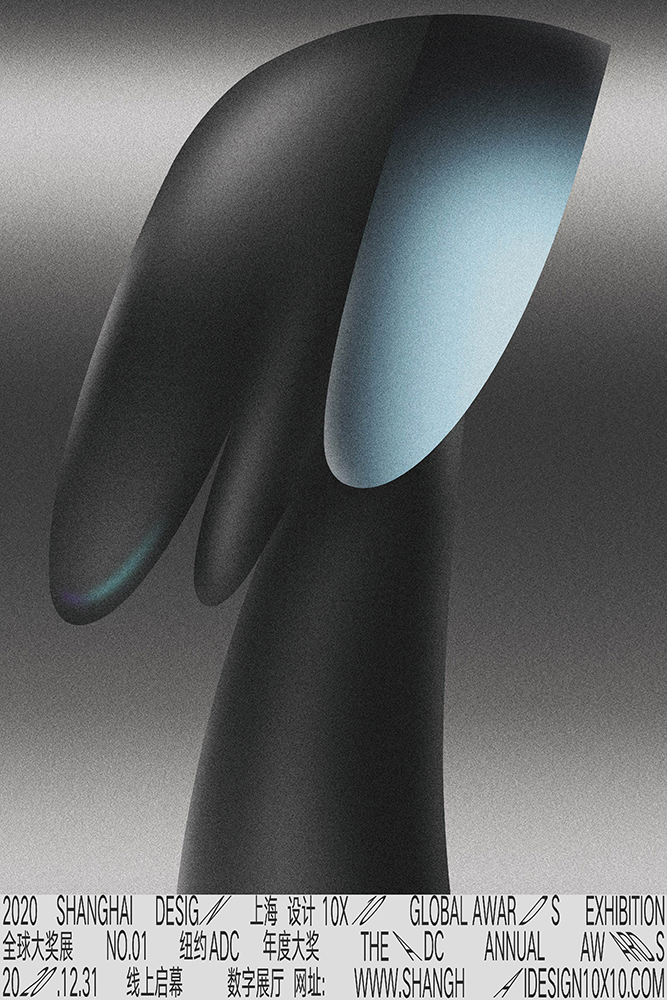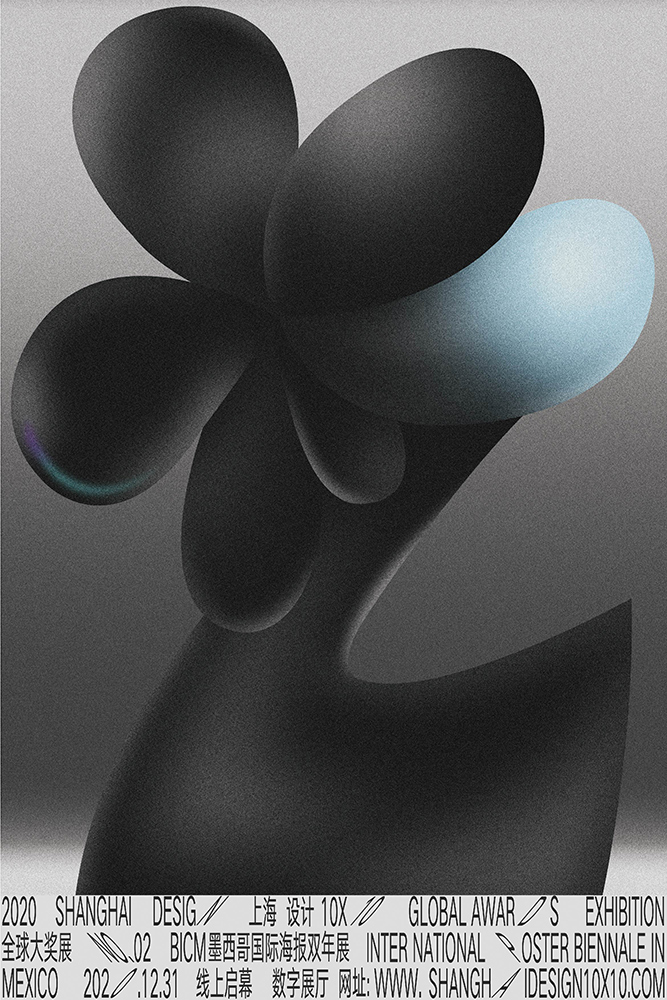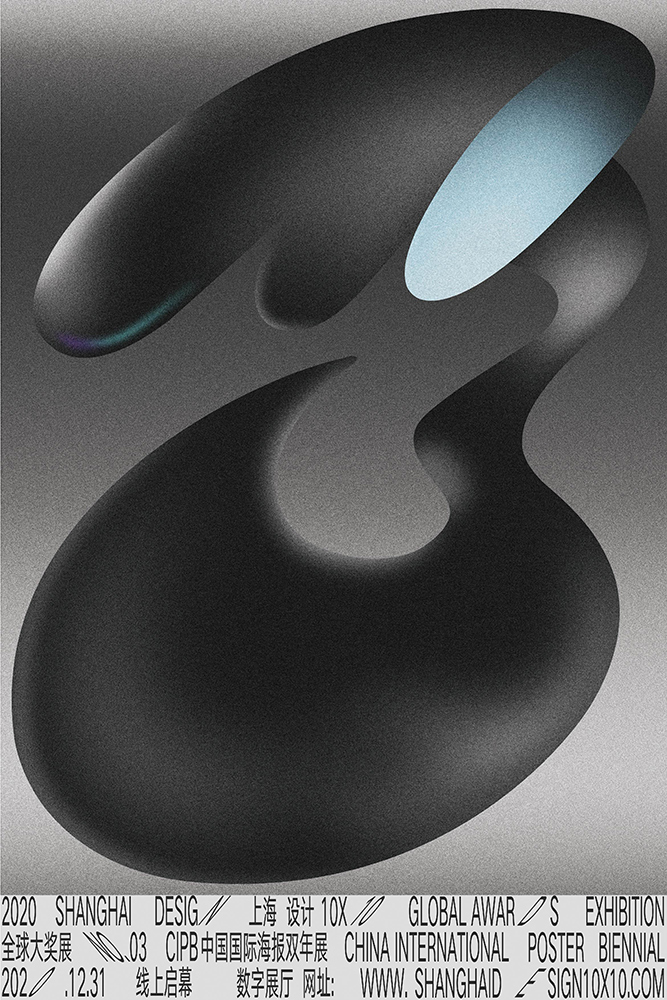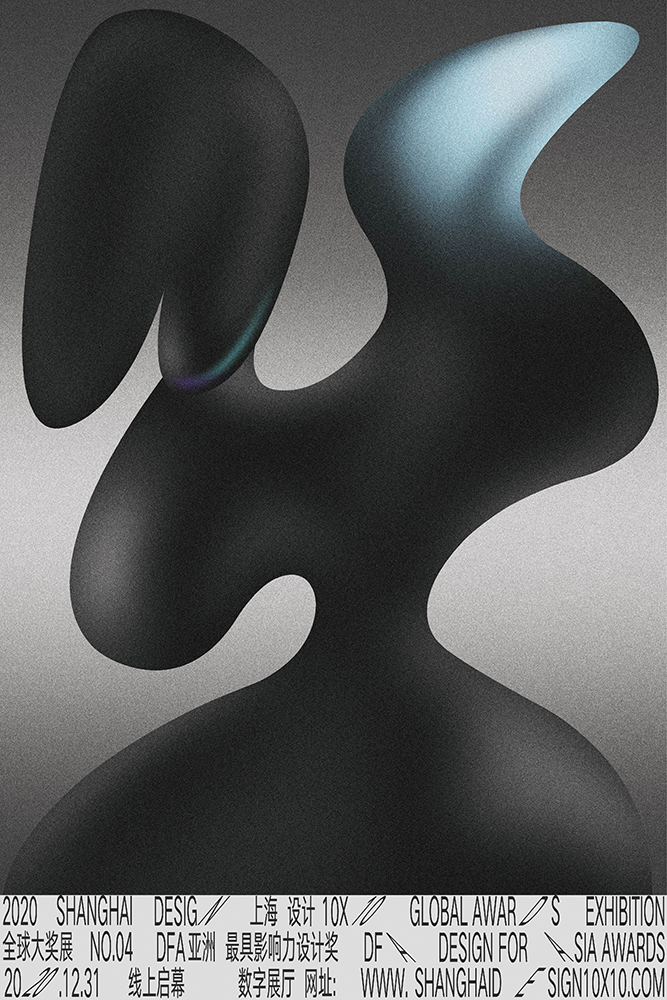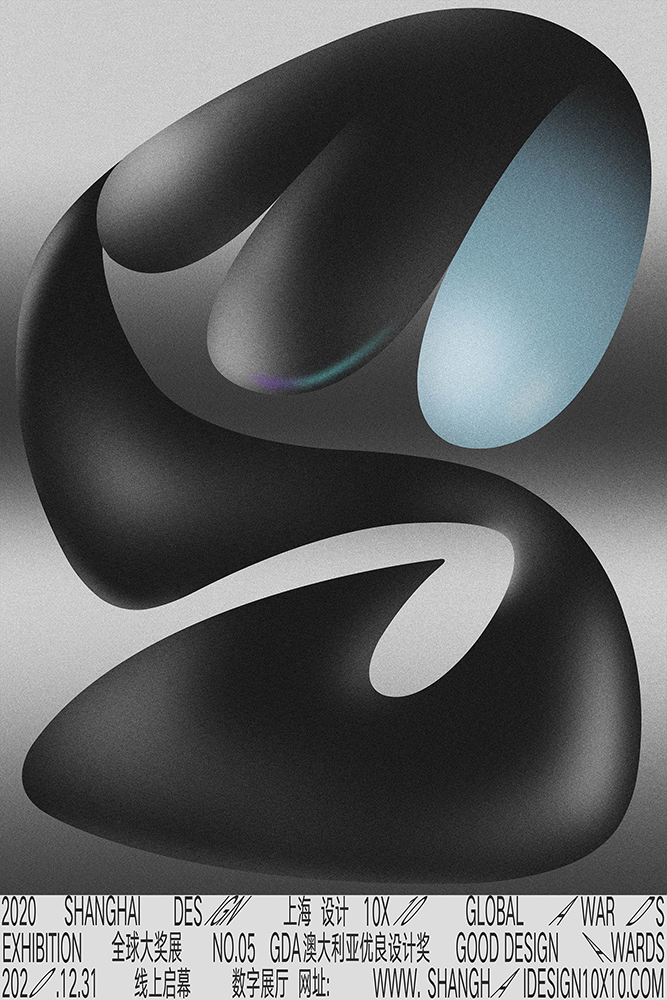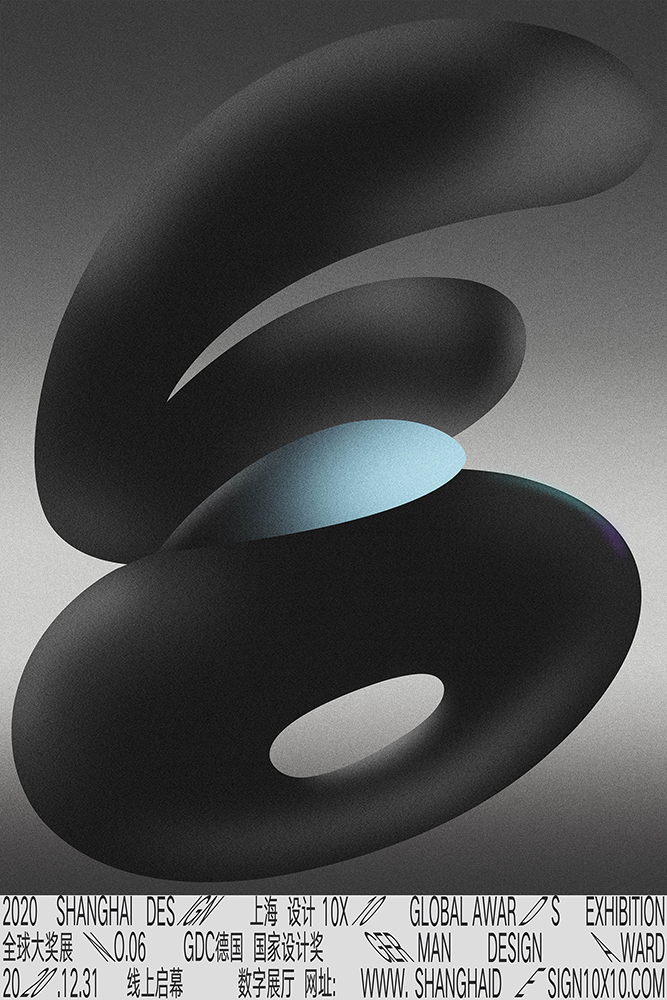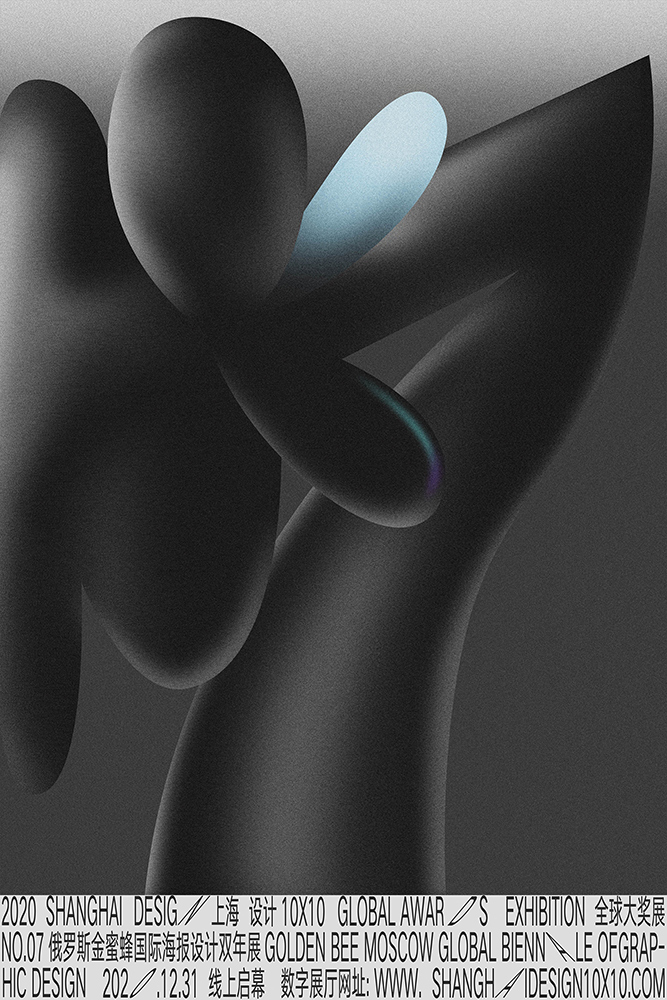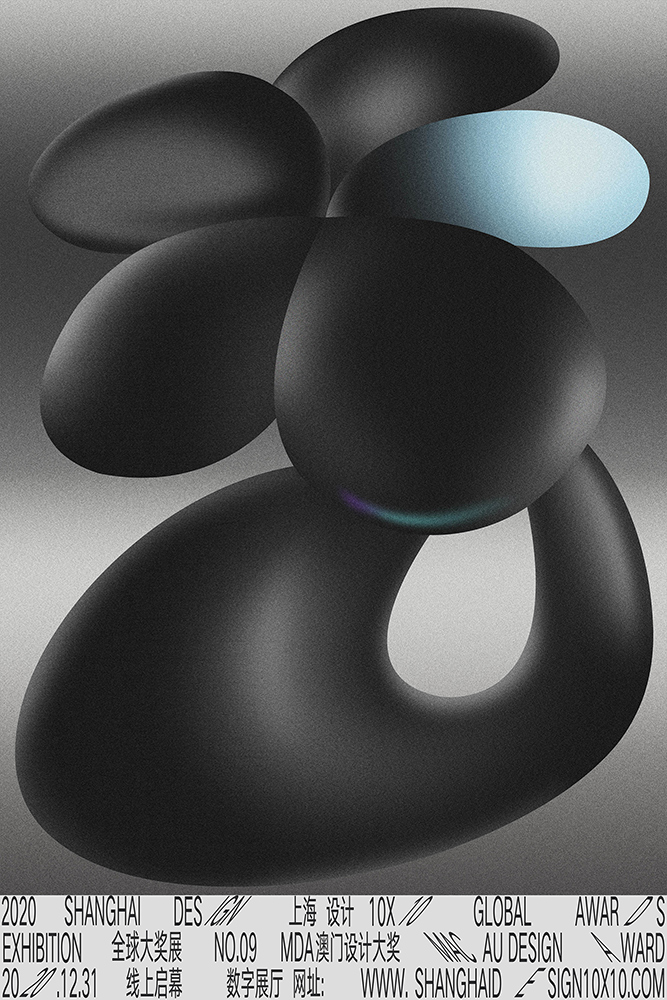 关闭
Close
关闭
Close
全球大奖展 2022 Shanghai Design 10×10
Global Awards Exhibition
“上海设计10×10”是上海美术学院基于设计学学科使命的“上海设计”概念上建设的展览与交流项目,以“建构平台”“汇聚能量”“相互砥砺”“共创未来”为理念,集结遍布世界各地、历史悠久、跨越大洲、拥有顶级影响力的设计大赛组织及设计机构,每两年内分别举办“上海设计10×10全球大奖展”“上海设计10×10全球设计高峰会”。意在搭建全球设计交流平台,立足上海、放眼全球,提升上海设计之都“上海设计”的全球影响力。通过展览、论坛、工作坊、出版等不同维度,建构连结全球设计“大赛×大奖×大师×大作”的最佳平台,形塑全球设计大奖交流互动的顶级殿堂。同时,与世界顶尖设计大赛组织及设计机构建立合作关系,汇聚全球设计精华。 Based on the mission of the design discipline, Shanghai Academy of Fine Arts has established the exhibition and exchange project of “Shanghai Design 10×10” on the concept of "Shanghai Design". Under the concept of “constructing platform”, “concentrating energy”, “mutually enthusiasm” and “creating the future together”, “Shanghai Design 10×10” gathers design competition organizations and design institutions with worldwide, long-standing, crossing four continents and top influences, and holds “Shanghai Design 10×10 Global Award Exhibition” and “Shanghai Design 10×10 Global Design Summit” every two years. With the base of Shanghai and the global view, the events aim to build an international design exchange platform and enhance the design competitiveness of Shanghai Design Capital. Through exhibitions, forums, publications and other different dimensions, the event is built into the best platform to connect the global design “big competitions, grand prizes, masters, great works”, and has become the top hall for communication and interaction of global design awards. At the same time, “Shanghai Design 10×10” has established cooperative relationships with the world's top design competition organizations and design institutions, bringing together the essence of global design.
“2023上海设计10×10”包含“全球设计高峰会”和“全球设计工作坊”两部分,日期为12月9日-12月12日。 "2023 Shanghai Design 10 ×10" is included two parts: "Global Design Summit" and "Global Design Workshop", with a duration from December 9th to December 12th.
指导单位: 上海大学
主办单位: 上海美术学院
学术指导单位: 上海市创意设计工作者协会
总顾问: 冯远、曾成钢
总策划: 陈青、林磐耸
总协调: 金江波、毛冬华
工作委员会: 陈静、宋国栓、曹俊、翟庆喜、程雪松、章莉莉、王海松
执行总监: 陆丹丹
项目监理: 张璟、蔡文超、成义祺
项目统筹:牛晨光、宋洁、潘敏晔、周红光、董顺琪、卢杨、芮希彦、舒眉、孟小坤、郁竟成、陈静、张晓萍
执行团队: 王蒙、李超、李明星、马俊、宋培铭、章顺凯
工作坊合作导师: 张璟、成义祺、蔡文超、王蒙、李超、乐丽君、宋天颐、马俊、张腾、范佳敏
工作坊助教:黎映川、宋培铭、逸馨、刘颖、刘样、周仁晗、李文婷、朱诗屹、周颖、渠可玚、徐佳仪、吴欣怡
视觉设计&空间设计: 蔡文超 (相对态 Relative State Design)
数字展厅: 梅数植 (702 Design)、李坚
项目助理: 秦方圆、江珊、宋培铭、刘颖、张潇少淇、曹紫璇、王静怡、田济豪、马诗雯、吴妍诺、冯怡然、徐雪桐、吴淑妍、章顺凯
官方媒体:新华网、解放日报、文汇报、新民晚报、新闻晨报、上海教育电视台、中新社、光明网、澎湃新闻、SMG看看新闻
专业媒体:陆俊毅_设计现场、Design360°、hiiibrand、最设计、雅昌网、凃志初自媒体
Guidance unit: Shanghai University
Organizer: Shanghai Academy of Fine Arts
Academic guidance unit: Shanghai Designers Association
General Advisors: Feng Yuan, Zeng Chenggang
Chief Planner: Chen Qing, Apex Lin, Pang-Soong
General Coordinator: Jin Jiangbo, Mao Donghua
Working Committee: Chen Jing, Song Guoshuan, Cao Jun, Zhai Qingxi, Cheng Xuesong, Zhang Lili, Wang Haisong
Executive Director: Lu Dandan
Project Supervision: Zhang Jing, Cai Wenchao, Cheng Yiqi
Project Coordinator: Niu Chenguang, Song Jie, Pan Minye, Zhou Hongguang, Dong Shunqi, Lu Yang, Rui Xiyan, Shu Mei, Meng Xiaokun, Yu Jingcheng, Chen Jing, Zhang Xiaoping
Executive Team: Wang Meng, Li Chao, Li Mingxing, Ma Jun, Song Peiming, Zhang Shunkai
Workshop Collaborating Mentors: Zhang Jing, Cheng Yiqi, Cai Wenchao, Wang Meng, Li Chao, Le Lijun, Song Tianyi, Ma Jun, Zhang Teng, Fan Jiamin
Workshop Assistants: Li Yingchuan, Song Peiming, Yi Xin, Liu Ying, Liu Yang, Zhou Renhan, Li Wenting, Zhu Shiyi, Zhou Ying, Qu Keying, Xu Jiayi, Wu Xinyi
Visual Design & Space Design: Cai Wenchao (Relative State Design)
Digital Exhibition Hall: Mei Shuzhi (702 Design), Li Jian
Project Assistants: Qin Fangyuan, Jiang Shan, Song Peiming, Liu Ying, Zhang Xiaoshaoqi, Cao Zixuan, Wang Jingyi, Tian Jihao, Ma Shiwen, Wu Yannuo, Feng Yiran, Xu Xuetong, Wu Shuyan, Zhang Shunkai
Official media: CCTV, Xinhuanet, Jiefang Daily, Wenhui Daily, Xinmin Evening News, Shanghai Morning Post, SETV, China News, Gmw.cn, ThePaper.cn, SMG Knews
Professional Media: Lu Junyi_ Designlive, Design 360 °, hiiibrand, AD518.com, Atrron.net, Tu Zhichu_ Design We Media


上海大学上海美术学院
上海市宝山区上大路99号
310015
联系邮箱
Shanghaisheji@163.com
微信公众号

合作媒体:


Shanghai Academy of Fine Arts, 99 Shangda Road, Baoshan District, Shanghai
310015
Contact
Shanghaisheji@163.com
WeChat Official Accounts

Media:

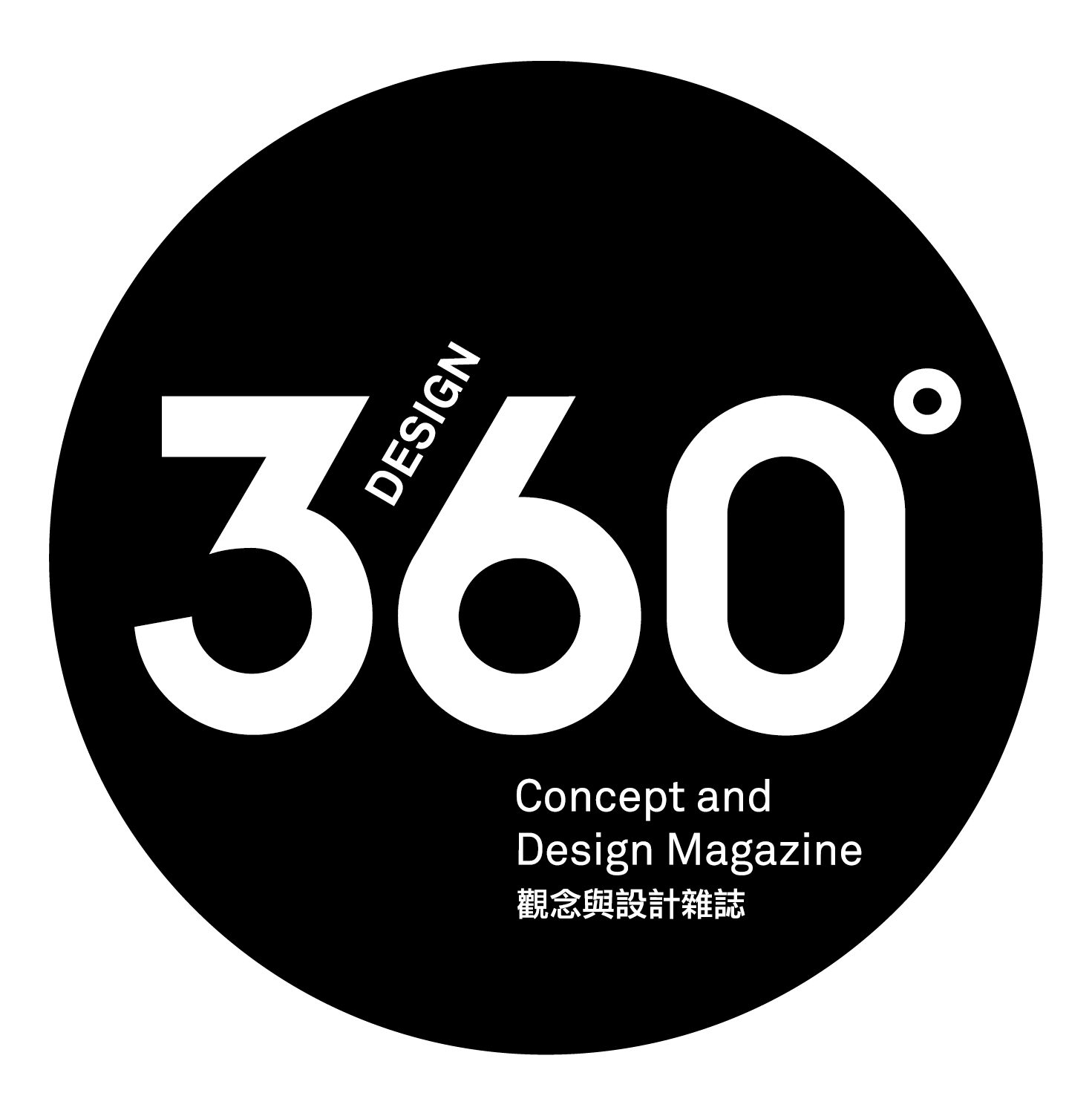



凃志初_设计自媒体Tu Zhichu_Design We Media
2023“上海设计 10×10”全球大奖展
最终解释权归“上海设计 10×10 ”组委会所有
The final right of interpretation of the 2023 Shanghai Design 10×10 Global Awards Exhibition belongs to the “Shanghai Design 10×10” Organising Committee.
 关闭
Close
关闭
Close
Global Awards Exhibition
“上海设计10×10”是上海美术学院基于设计学学科使命的“上海设计”概念上建设的展览与交流项目,以“建构平台”“汇聚能量”“相互砥砺”“共创未来”为理念,集结遍布世界各地、历史悠久、跨越大洲、拥有顶级影响力的设计大赛组织及设计机构,每两年内分别举办“上海设计10×10全球大奖展”“上海设计10×10全球设计高峰会”。意在搭建全球设计交流平台,立足上海、放眼全球,提升上海设计之都“上海设计”的全球影响力。通过展览、论坛、工作坊、出版等不同维度,建构连结全球设计“大赛×大奖×大师×大作”的最佳平台,形塑全球设计大奖交流互动的顶级殿堂。同时,与世界顶尖设计大赛组织及设计机构建立合作关系,汇聚全球设计精华。 Based on the mission of the design discipline, Shanghai Academy of Fine Arts has established the exhibition and exchange project of “Shanghai Design 10×10” on the concept of "Shanghai Design". Under the concept of “constructing platform”, “concentrating energy”, “mutually enthusiasm” and “creating the future together”, “Shanghai Design 10×10” gathers design competition organizations and design institutions with worldwide, long-standing, crossing four continents and top influences, and holds “Shanghai Design 10×10 Global Award Exhibition” and “Shanghai Design 10×10 Global Design Summit” every two years. With the base of Shanghai and the global view, the events aim to build an international design exchange platform and enhance the design competitiveness of Shanghai Design Capital. Through exhibitions, forums, publications and other different dimensions, the event is built into the best platform to connect the global design “big competitions, grand prizes, masters, great works”, and has become the top hall for communication and interaction of global design awards. At the same time, “Shanghai Design 10×10” has established cooperative relationships with the world's top design competition organizations and design institutions, bringing together the essence of global design.
“2023上海设计10×10”包含“全球设计高峰会”和“全球设计工作坊”两部分,日期为12月9日-12月12日。 "2023 Shanghai Design 10 ×10" is included two parts: "Global Design Summit" and "Global Design Workshop", with a duration from December 9th to December 12th.
指导单位: 上海大学
主办单位: 上海美术学院
学术指导单位: 上海市创意设计工作者协会
总顾问: 冯远、曾成钢
总策划: 陈青、林磐耸
总协调: 金江波、毛冬华
工作委员会: 陈静、宋国栓、曹俊、翟庆喜、程雪松、章莉莉、王海松
执行总监: 陆丹丹
项目监理: 张璟、蔡文超、成义祺
项目统筹:牛晨光、宋洁、潘敏晔、周红光、董顺琪、卢杨、芮希彦、舒眉、孟小坤、郁竟成、陈静、张晓萍
执行团队: 王蒙、李超、李明星、马俊、宋培铭、章顺凯
工作坊合作导师: 张璟、成义祺、蔡文超、王蒙、李超、乐丽君、宋天颐、马俊、张腾、范佳敏
工作坊助教:黎映川、宋培铭、逸馨、刘颖、刘样、周仁晗、李文婷、朱诗屹、周颖、渠可玚、徐佳仪、吴欣怡
视觉设计&空间设计: 蔡文超 (相对态 Relative State Design)
数字展厅: 梅数植 (702 Design)、李坚
项目助理: 秦方圆、江珊、宋培铭、刘颖、张潇少淇、曹紫璇、王静怡、田济豪、马诗雯、吴妍诺、冯怡然、徐雪桐、吴淑妍、章顺凯
官方媒体:新华网、解放日报、文汇报、新民晚报、新闻晨报、上海教育电视台、中新社、光明网、澎湃新闻、SMG看看新闻
专业媒体:陆俊毅_设计现场、Design360°、hiiibrand、最设计、雅昌网、凃志初自媒体
Guidance unit: Shanghai University
Organizer: Shanghai Academy of Fine Arts
Academic guidance unit: Shanghai Designers Association
General Advisors: Feng Yuan, Zeng Chenggang
Chief Planner: Chen Qing, Apex Lin, Pang-Soong
General Coordinator: Jin Jiangbo, Mao Donghua
Working Committee: Chen Jing, Song Guoshuan, Cao Jun, Zhai Qingxi, Cheng Xuesong, Zhang Lili, Wang Haisong
Executive Director: Lu Dandan
Project Supervision: Zhang Jing, Cai Wenchao, Cheng Yiqi
Project Coordinator: Niu Chenguang, Song Jie, Pan Minye, Zhou Hongguang, Dong Shunqi, Lu Yang, Rui Xiyan, Shu Mei, Meng Xiaokun, Yu Jingcheng, Chen Jing, Zhang Xiaoping
Executive Team: Wang Meng, Li Chao, Li Mingxing, Ma Jun, Song Peiming, Zhang Shunkai
Workshop Collaborating Mentors: Zhang Jing, Cheng Yiqi, Cai Wenchao, Wang Meng, Li Chao, Le Lijun, Song Tianyi, Ma Jun, Zhang Teng, Fan Jiamin
Workshop Assistants: Li Yingchuan, Song Peiming, Yi Xin, Liu Ying, Liu Yang, Zhou Renhan, Li Wenting, Zhu Shiyi, Zhou Ying, Qu Keying, Xu Jiayi, Wu Xinyi
Visual Design & Space Design: Cai Wenchao (Relative State Design)
Digital Exhibition Hall: Mei Shuzhi (702 Design), Li Jian
Project Assistants: Qin Fangyuan, Jiang Shan, Song Peiming, Liu Ying, Zhang Xiaoshaoqi, Cao Zixuan, Wang Jingyi, Tian Jihao, Ma Shiwen, Wu Yannuo, Feng Yiran, Xu Xuetong, Wu Shuyan, Zhang Shunkai
Official media: CCTV, Xinhuanet, Jiefang Daily, Wenhui Daily, Xinmin Evening News, Shanghai Morning Post, SETV, China News, Gmw.cn, ThePaper.cn, SMG Knews
Professional Media: Lu Junyi_ Designlive, Design 360 °, hiiibrand, AD518.com, Atrron.net, Tu Zhichu_ Design We Media


上海大学上海美术学院
上海市宝山区上大路99号
310015
联系邮箱
Shanghaisheji@163.com
微信公众号

合作媒体:


Shanghai Academy of Fine Arts, 99 Shangda Road, Baoshan District, Shanghai
310015
Contact
Shanghaisheji@163.com
WeChat Official Accounts

Media:





凃志初_设计自媒体Tu Zhichu_Design We Media
2023“上海设计 10×10”全球大奖展
最终解释权归“上海设计 10×10 ”组委会所有
The final right of interpretation of the 2023 Shanghai Design 10×10 Global Awards Exhibition belongs to the “Shanghai Design 10×10” Organising Committee.
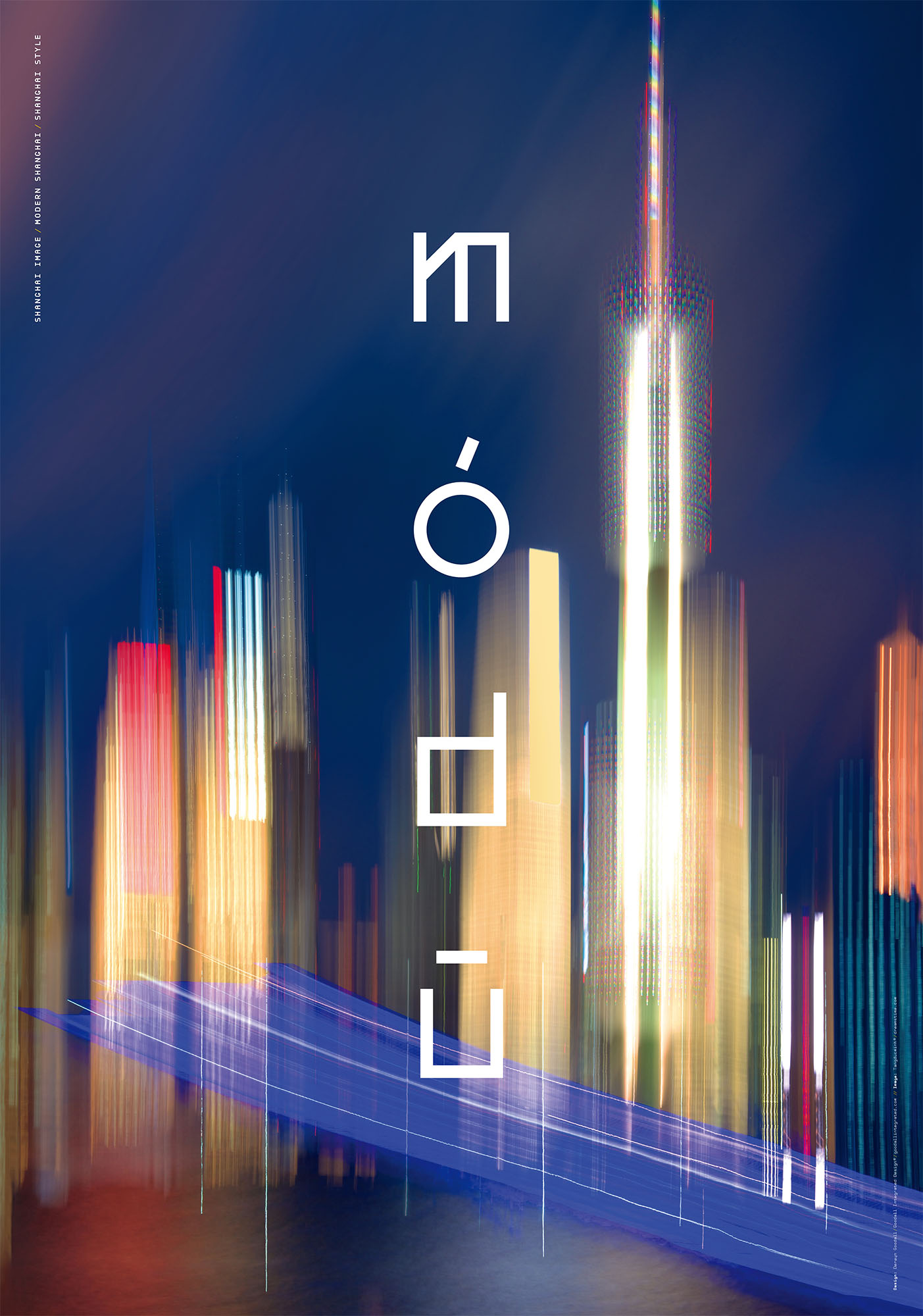
魔都
Derwyn Goodall
加拿大
2021
约翰·格拉夫达尔 特邀作品
为了捕捉上海的现代风格精髓,我在海报设计中结合了“Módū”这个词,使用了色彩鲜艳的解释性城市景观图像。
上海被描述为中国经济蓬勃发展的“样板”。这座城市拥有装饰艺术和石库门等多种建筑风格,以陆家嘴天际线、博物馆和历史建筑而闻名,包括城隍庙、豫园、中华艺术宫和外滩建筑。
Módū 或“魔都”,是上海在当代的别称,在年轻人中广为人知。这个名字最早出现在村松松府 1924 年的小说《Mato》中,该小说将上海描绘成一个光明与黑暗并存的二分城市。
“Módū”这个词与上海还有其他重要的联系。它是现居日本的中国作家刘建辉的一本书的书名。这本书于2003年问世,从日本人的角度讲述上海的历史。还有,著名动漫《中华小当家》第34集以“魔都上海”为题名。这是一部在中国非常有名的动漫,经常在许多电视频道上看到。
“魔”的中文词也可以解释为“迷人的”,再加上“都”,意思是“城市或首都”。整个词都有“迷人的城市”的意思,这也是很多人对上海的印象。
Módū
Derwyn Goodall
Canada
2021
John Gravdahl
Specially invited poster
To capture the modern, stylistic essence of Shanghai, I used a brightly coloured, interpretive cityscape image in combination the word “Módū”.
Shanghai has been described as the “showpiece” of the booming economy of China. Featuring several architectural styles such as Art Deco and Shikumen, the city is renowned for its Lujiazui skyline, museums and historic buildings including the City God Temple, Yu Garden, the China Pavilion and buildings along the Bund.
Módū or “Magical City”, is a contemporary nickname for Shanghai and is widely known among its youth. The name was first mentioned in Shōfu Muramatsu’s 1924 novel Mato, which portrayed Shanghai as a dichotomic city where both light and darkness exists.
The word “Módū” has other significant associations to Shanghai. It came up as the title for a book by Chinese writer Jianhui Liu who now lives in Japan. The book came out at 2003 and is about the history of Shanghai from Japanese peoples’ perspective. Also, the 34th episode of famous anime Chūka Ichiban! used the word “Modu Shanghai” as its title. It was a very famous anime in China and has been frequently seen on many TV channels.
The Chinese word for “Mo” can also be interpreted as “being fascinating”, together with the “Du”, which means “city or capital”. The entire word has the meaning of “the fascinating city”, which is what many people think of Shanghai.

